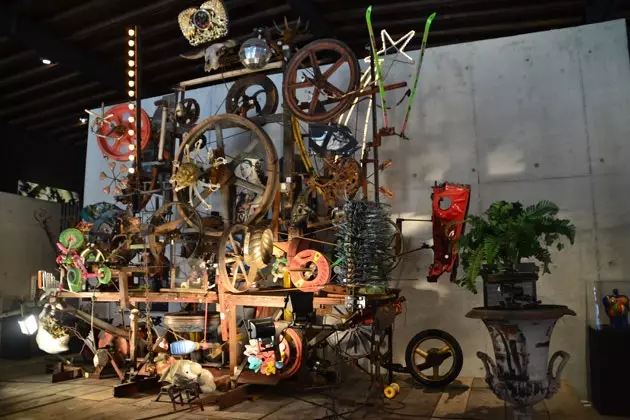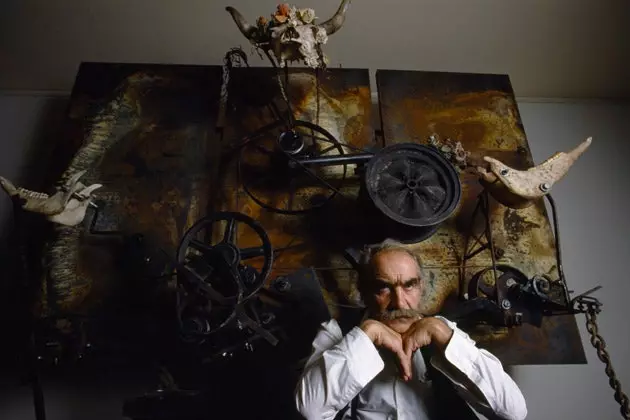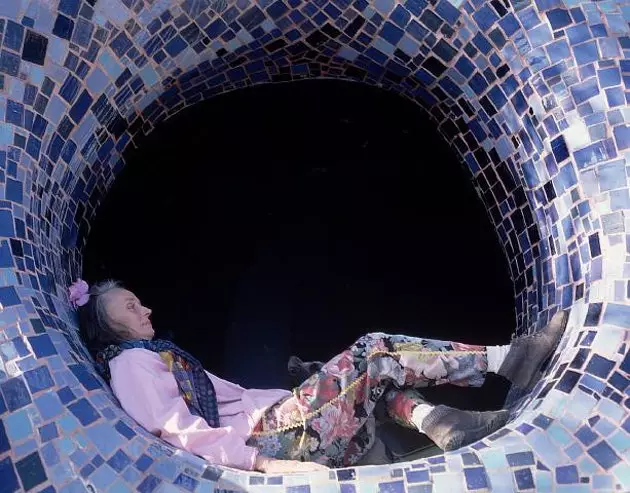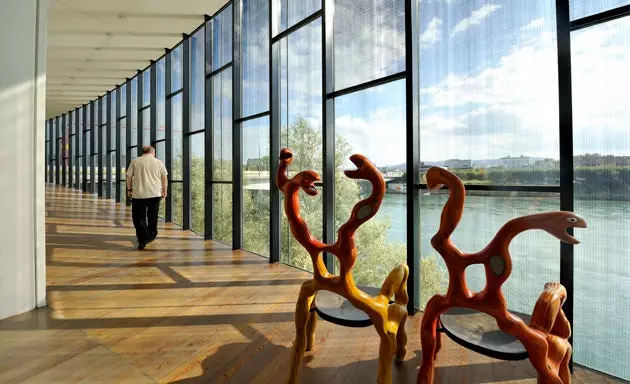
In this museum you are invited to touch, interact, explore
on paper we are facing an aberration to the taste for compartmentalizing and artistic rigor, if Postmodernity has not put an end to it. In the same hall, under the same roof and sharing the name of a museum, a sample of the work of the controversial, vindictive and always critical Jean Tinguely and the creations of the casual pop artist Niki de Saint Phalle. What's the trick? Well, in life they were husband and wife, although history will end up divorcing them in divergent currents. Before this happens and the commissioners end the romanticism Let's enjoy this little antithetical universe.
First characteristic of a cool museum: not be too big . Second requirement: be fun and different. Third requirement: be designed for all types of audiences.
In the ** Espace Jean Tinguely-Niki de Saint Phalle ** of the Freiburg Museum of Art and History meet all these points. And, what is even more impressive, it is contemporary art , the one that has such a bad press and that carries on its back the most popular jokes of youtuber monologists. The one that a child can make with some spaghetti and two liters of red Titanlux and that doesn't copy reality. Yes that's how it is. And it is probably one of those pleasant surprises that a walk through this Swiss city allows you to discover.

Jean Tinguely before one of his convoluted works
The cause of his success is the pleasant mixture of two quite opposite styles, Although the designs of two crazy hearts would unite them in his biography and in his family book . On the one hand, the curvy, suggestive, histrionic forms of the Nanas by Niki de Saint Phalle, an artist whose Sistine Chapel is a garden of brilliant figures in Tuscany. On the other, the rust from recycled materials from Jean Tinguely's sculptures with which the Swiss artist intends to warn of the unlimited overproduction of consumer goods in today's society.
There's plenty of localism and patriotic pride in this museum , since Jean was born in this city. But it does not intend to be a center for vindication or exaltation of the importance of this author in the urban planning of cities at the end of the 20th century. Not much less. That's what the Basel monographic space is for, where an autopsy is done on each work, at each stage of his career, looking for common traits with Dadaism or Neorealism. Here the visitor is simply presented as if he were a stranger but without further pretensions. Just six large mechanical sculptures occupy the great hall of the museum.

Niki de Saint Phalle in the Tarot Garden
And one stands out above all, the one that the author himself called without synthesizing the 'Altarpiece of Western abundance and totalitarian mercantilism' . Following the criteria of the art market, it is a difficult work to place. It is not one of the mechanical fountains that rhythm the beats of the cities nor is it comfortable to enjoy, since the movement of its pieces produces a screeching piped music quite unbearable . But to admire it is entertaining. In an attack of Diogenes syndrome mixed with kilos of criticism and a plea in defense of recycling. And all this in a meaningless movement, cyclical but useless since it has no life of its own or freedom.
But where is the fun? Well, in giving movement and activating the mechanisms, not only of the rockstar of the exhibition, but of all the creations of the Fribourgeois. A huge and striking red button instinctively encourages you to do it, not to resist the temptation. It is not a boast of technology, simply an original idea of the author himself that makes the average time invested in contemplating his orthopedic movements greater than usual, as can be seen in this video:
When the eyes get tired or the electrical current that gives autonomy to each creation is cut off, the eyes respond to the colorful stimulation of the small sculptures that line the walls. Once the infantile instinct to tinker, to experiment, has been satiated, of not giving pause to the old gears, it is the turn of a more feminine view of the world . Let's not be frivolous, it is not that the concept of protest in art is tiresome, but a breath of fresh and different air during the visit does not hurt. Some playful art, though in your imagination always underlie the vindication of the modern woman based on the feminist and vindictive canons that Niki de Saint Phalle nurtured and lived during the 60s.
Her voluptuous and garish figures convey more movement than her husband's mechanical junk, in a clear example of the power of the overdose of form and color in art. And that's cool. And of his small sample, what most entertains and distracts is a wall with figures glued as if it were a huge refrigerator with magnets attached. She called him 'Remembering, 1997-1998' in what seems to be a small diary of ideas and sketches that as a whole does not seem to make any sense. A graffiti of some twilight but beautiful years that coexists with a x-ray of the worst of capitalist society . Jean Tinguely and Niki de Saint Phalle were husband and wife and this museum, their particular Big Brother where instead of stripping their bodies and quilting, they take the armor off their soul and their desires. And the visitor enjoys them a lot walking from one side to another through an imaginary house built with years and experiences . Yes, their styles may not stick or glue but there is also the possibility that one is not understood without the other. As in the best marriages.

Monographic space in Basel by Jean de Tinguely
